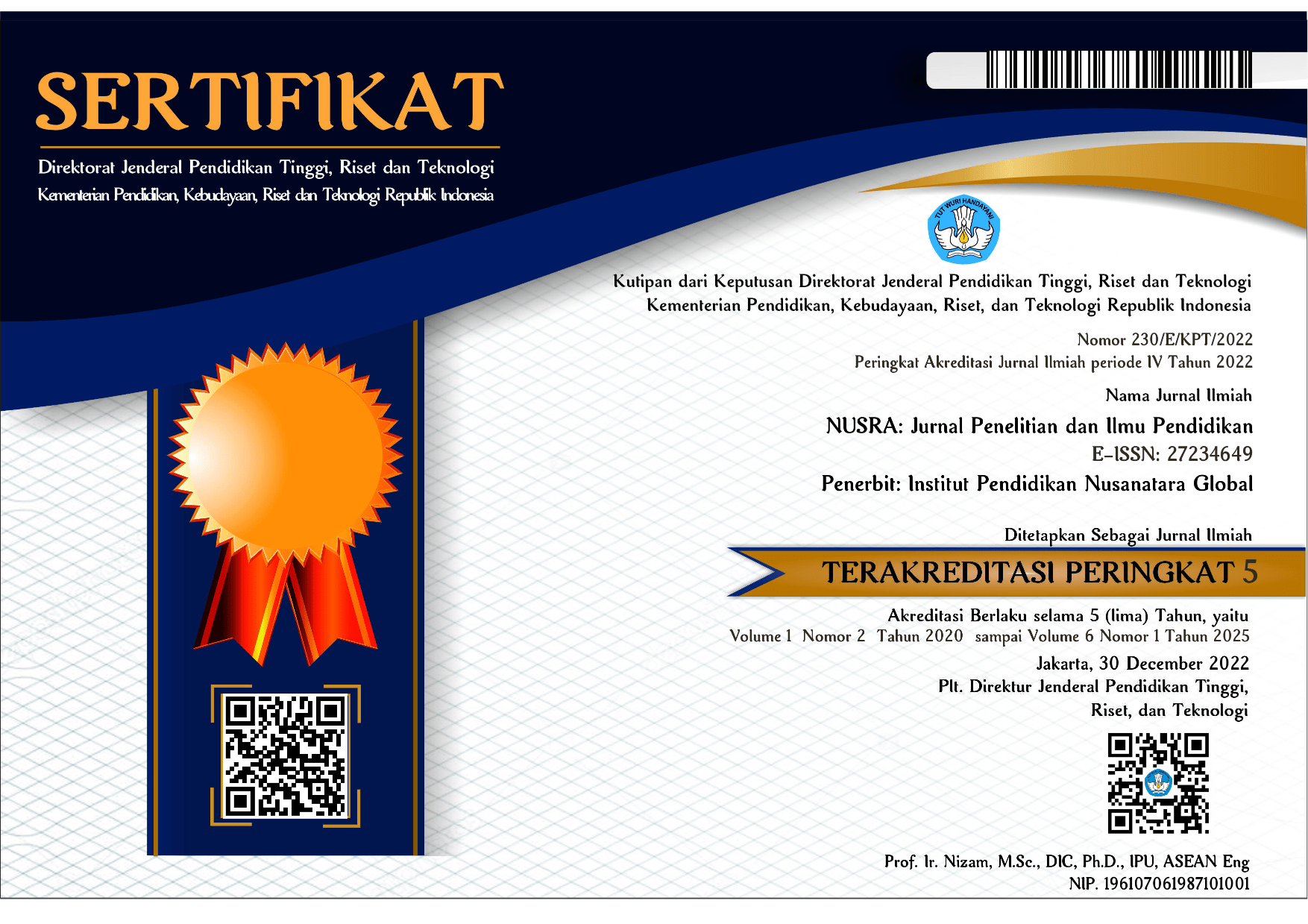Students’ Strategies To Decrease Anxiety In Speaking English Class At The Sixth Semester Of The Informatics Engineering Study Program
DOI:
https://doi.org/10.55681/nusra.v5i3.3130Keywords:
Students’ Strategies, Anxiety, SpeakingAbstract
This study aimed to know the students’ strategies to decrease anxiety in speaking English class at the sixth semester of the informatics engineering study program. The researcher used descriptive method because it is referred to describe the students’ strategy anxiety. To collect the data, the instrument used in this study are classroom observations and questionnaire. The findings reveal that students engage in positive self-talk, visualization, regular practice, and relaxation techniques to boost their confidence. Peer support and feedback also play significant roles in creating a supportive learning environment. Classroom observations highlight the importance of a positive classroom atmosphere fostered by encouraging lecturers and collaborative activities. Additionally, the use of technology and institutional resources such as counseling services are found to be effective in reducing language anxiety.The questionnaire given includes five strategies namely preparation, relaxation, positive thinking, peer seeking, and resignation. The respondent of this research was the sixth semester of the informatics engineering study program which consisted of 32 students. So the researcher can conclude that the students gave agree about the strategy to reduce anxiety in speaking English. Where the strategy makes students can improve their skills, especially in speaking skills and make the students used the strategy where they speaking English. The research findings showed that students' agreement of Preparation was 101, Relaxation 117, Positif Thinking 121, Peer Seeking 110 and Resignation 108. It can be assumed that the percentage of human experience was 63%, for Preparation, 73% for Relaxation, 75% for Positive Thinking, 68,75 for Peer Seeking and 67,50% for Resignation.
Downloads
References
Asysyfa, A., Handyani, A. M., & Rizkiani, S. (2019). Students’ Speaking Anxiety in EFL Classroom. PROJECT (Professional Journal of English Education), 2(4), 581. https://doi.org/10.22460/project.v2i4.p581-587
Kondo, Y. (2010). A study on relationship between language anxiety and proficiency: In a case of Japanese learners of English. Retrieved November, January 2010, 129–138.
Moleong, L. J. (2018). Metodologi penelitian kualitatif. Bandung : PT Remaja Rosdakarya, 2018. https://opac.perpusnas.go.id/DetailOpac.aspx?id=1133305
Morissan. (2019). Penelitian Kualitatif. Prenada Media Group.
Parupalli Srinivas Rao. (2019). The importance of speaking skills in English classrooms. Alford Council of International English & Literature Journal, 2(2), 6–18. www.acielj.com
Rinker, T., & Labs, C. (2014). Likert. May.
Scott, Thornbury. (2005). H. to T. Speaking. (2005). How to Teach Speaking. https://typeset.io/papers/how-to-teach-speaking-3bw89bdiga
Sugiyono. (2014). Metode penelitian kombinasi (mixed methods)No Title. Alfabeta Bandung. https://scholar.google.com/citations?view_op=view_citation&hl=id&user=MGOs5rkAAAAJ&citation_for_view=MGOs5rkAAAAJ:a9-T7VOCCH8C
Supriyani, S., & Kartikasari, F. D. (2022). Students’ Anxiety Factors in Speaking English. Journal of English Language and Literature (JELL), 7(1), 1–10. https://doi.org/10.37110/jell.v7i1.137
Sutaryasah. (2017). An Analysis of Student’s Speaking Anxiety and its Effect on Speaking Performance. IJELTAL.
Wiramihardja, S. A. (2005). Pengantar Psikologi Abnormal. https://www.semanticscholar.org/paper/Pengantar-Psikologi-Abnormal-Wiramihardja/0fd0c227bbf0a0ee9f7a8660723fbe6792e1cba5?utm_source=direct_link
Worde. (n.d.). An investigation of students’ perceptions of foreign language anxiety.
Yasin. (2014). A combination of qualitative and quantitative methods.
Downloads
Published
How to Cite
Issue
Section
License
Copyright (c) 2024 Dholiful Hadi, Ulfa Yuliasari

This work is licensed under a Creative Commons Attribution-ShareAlike 4.0 International License.














